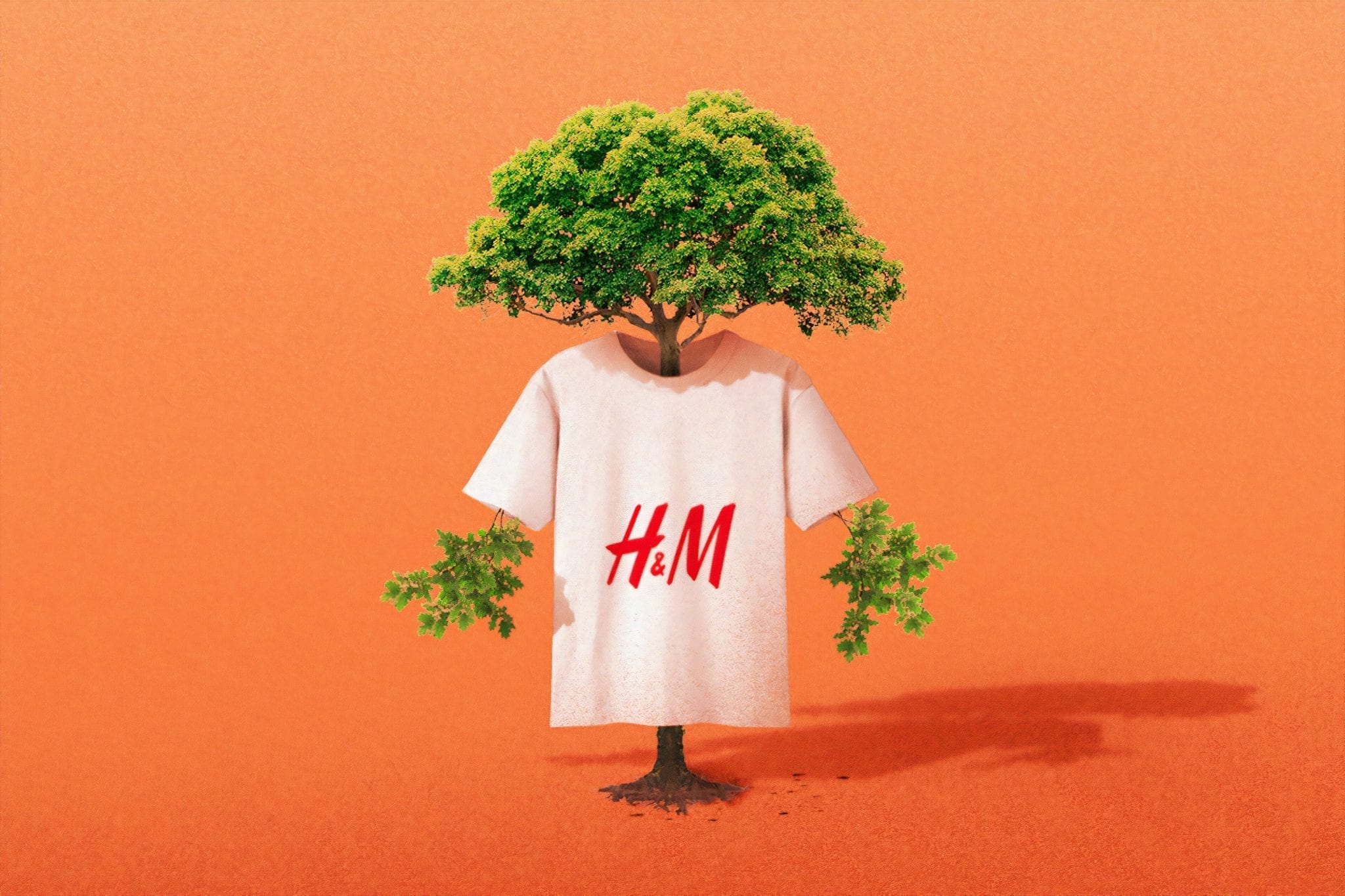Fast fashion juggernaut H&M launched its 2020 Fall collection earlier this month which they described as ‘an exploration of the beauty and innovation behind recycled materials’. The collection comprises eight pieces of clothing made from ‘more sustainably sourced’ materials like lace, jacquard, and wool. But is this just a tokenistic performance to appease critics, and allow the brand to continue with their extremely unsustainable practices scot-free?
At face value, it looks like a pleasing initiative to their increasingly ‘woke’ 16-35 demographic. The items are both fashionable and apparently guilt-free, as they are made from recycled polyester, nylon, and wool from textile waste, plastic waste, or a mixture of the two. The press release boasts that 57% of the materials H&M group use to make the clothes are organic, recycled, or sustainably sourced materials. However, in the H&M 2019 sustainability report, only 2.2% of this figure actually consisted of recycled material, a mere 0.8% increase from the year before.
The other 54.8% are ‘sustainably sourced’, described as ‘naturally grown or cultivated and are better from an environmental perspective’ in the 2018 report. Clicking the link for the full definition of “sustainably sourced” takes you to a page with details about their materials that are repeated from the very document you were directed away from. For one of the many large fashion brands who use transparency as a get-out-of-jail-free card, it seems a contradictory move to spin those digging below the surface on a roundabout of hyperlinks.
Using the word ‘natural’ does not necessarily equate to better for the environment. In order for an item to wear the H&M ‘Conscious’ badge of honour it only needs to contain 50% recycled or sustainably-sourced materials. A 100% organic cotton item will take between one and five months to biodegrade. This is because cotton is cellulose; a chain of glucose rings where the links between them can easily be attacked by a naturally-occurring enzyme or water and break it down. However, more often than not, cheaper textiles are made from a blend including nylon, polyester, or spandex. These long-chain polymers, with much stronger interchain forces than cotton, will increase this to between 20 and 200 years underground.
Even if you like to keep hold of your clothes, often when you return a garment that did not fit or wasn’t quite the right colour, it ends up in landfill. It is too labour-intensive for the company to investigate the nuances of each claim, and more economic for the item to be shipped across the globe to be sold at a discount or go straight to the dump. Fast fashion brands survive on this throwaway culture. Consumer demands are identified and garments are quickly produced to meet them that are not designed to outlive the trend, betting that it will be cast aside before it starts to deteriorate.
Sofia Voudouroglou is a sustainable fashion activist and educator, using Youtube and Instagram as outlets for exposing the truth behind the brands. She said: “Recycling fabrics is certainly a part of closing the loop and making fashion circular, but, as H&M show in their collections, recycling alone does not make a brand sustainable.
“Even if it were possible to recycle 100% of used garments- and we are nowhere near that- the energy and manpower of the recycling process must be taken into account, not to mention the impact, environmental and social, of the production of those new items. Fibre innovation is definitely a part of a sustainable fashion industry, but it is only one small gear in a huge machine. The impact of the entire cycle has to be considered, from design and manufacture, to use, washing, repair, disposal and ideally recycling.”
H&M’s new collection should feel like a step in the right direction, but the brand’s confidence that a façade this thin will sufficiently portray them as ethical, to me, seems ominous.
Words by Fiona Jackson
Support The Indiependent
We’re trying to raise £200 a month to help cover our operational costs. This includes our ‘Writer of the Month’ awards, where we recognise the amazing work produced by our contributor team. If you’ve enjoyed reading our site, we’d really appreciate it if you could donate to The Indiependent. Whether you can give £1 or £10, you’d be making a huge difference to our small team.
